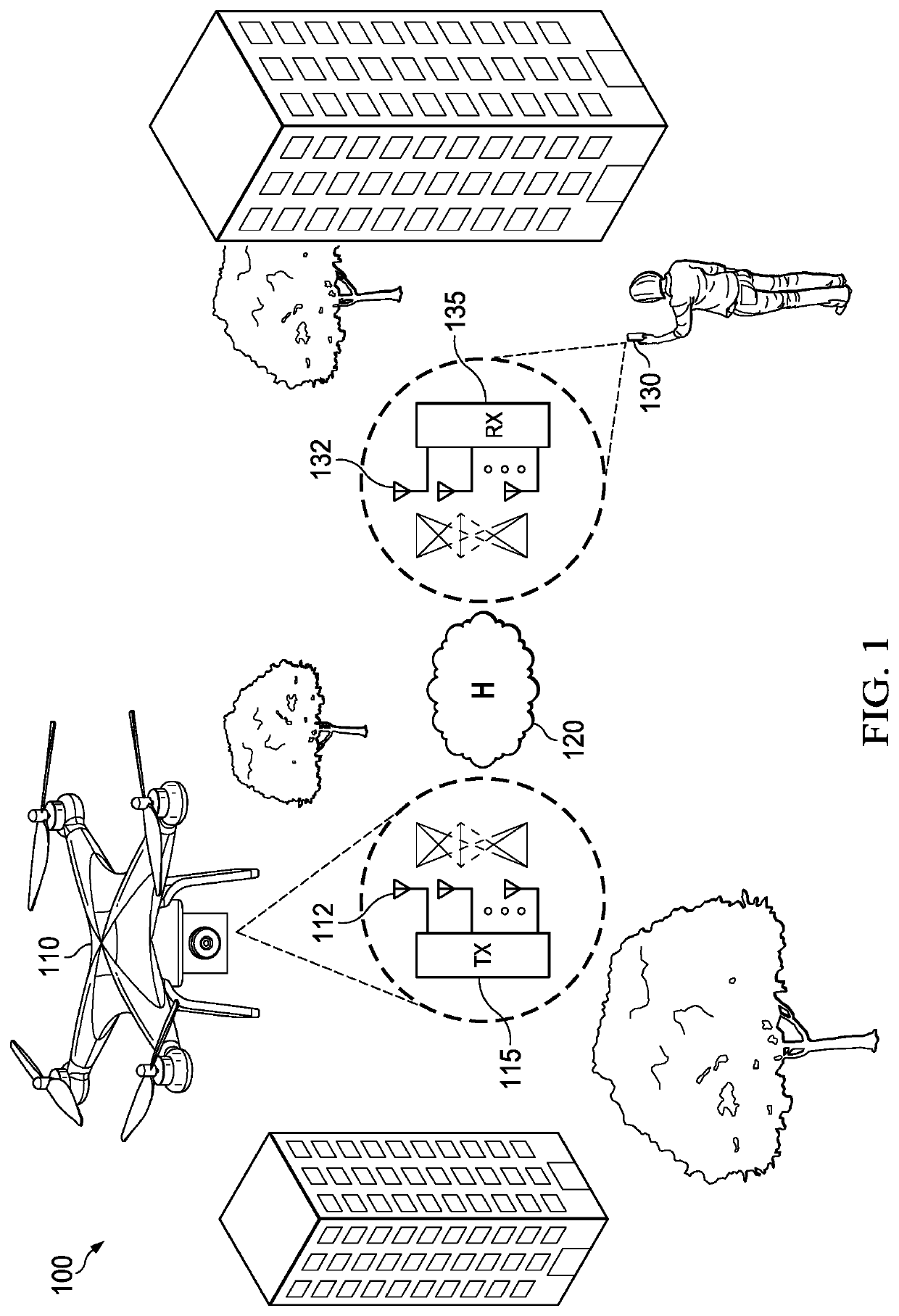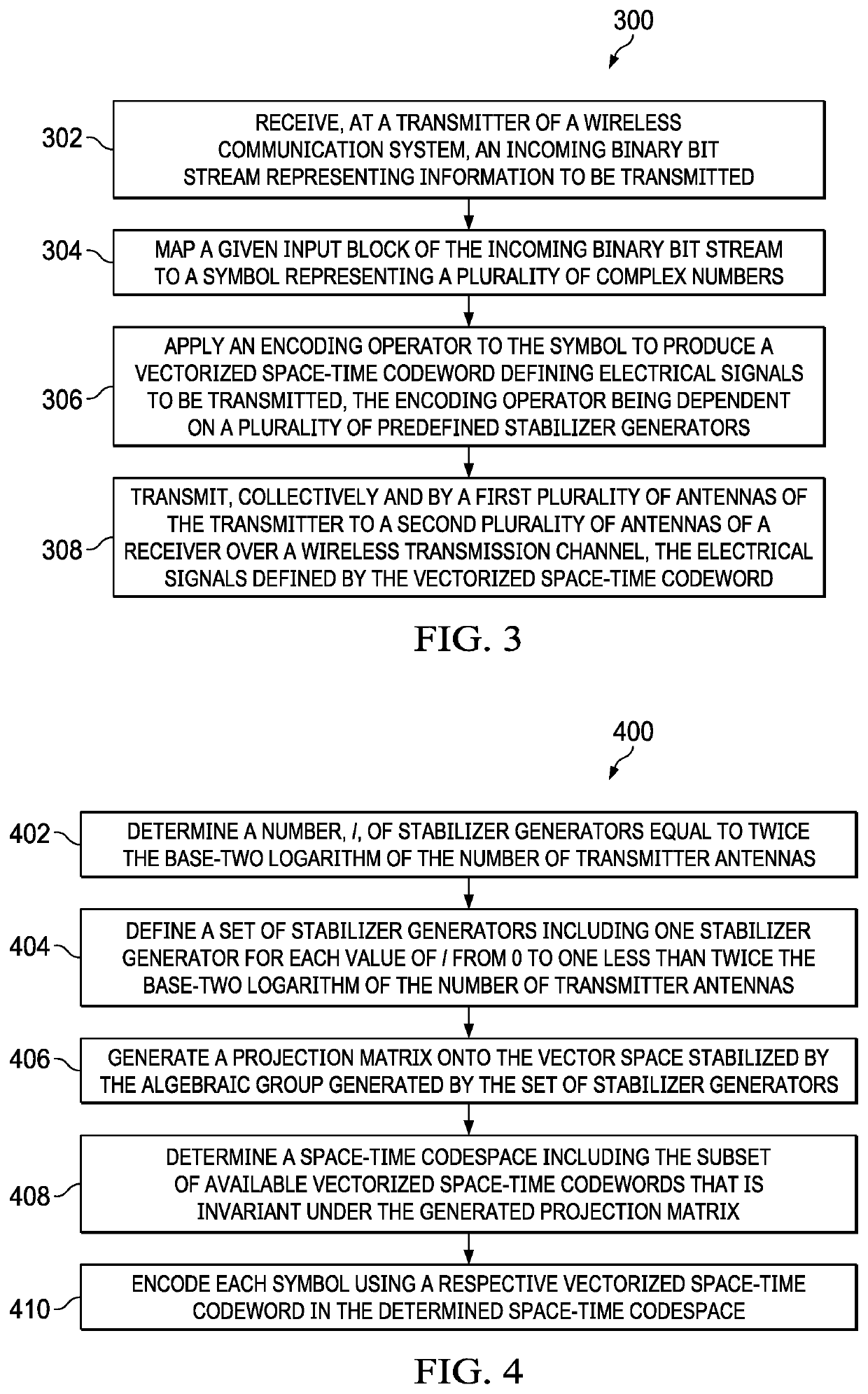Space-time encoding in wireless communication systems
a wireless communication and space-time encoding technology, applied in the field of space-time encoding of information, can solve the problems of blocklength-constrained settings and reveal a significant rate penalty arising from a limited blocklength
- Summary
- Abstract
- Description
- Claims
- Application Information
AI Technical Summary
Benefits of technology
Problems solved by technology
Method used
Image
Examples
Embodiment Construction
)
[0028]In the following description, details are set forth by way of example to facilitate discussion of the disclosed subject matter. It should be apparent to a person of ordinary skill in the field, however, that the disclosed embodiments are exemplary and not exhaustive of all possible embodiments. For a more complete understanding of the present disclosure, reference is made to the following description and accompanying drawings.
[0029]Disclosed herein are methods for encoding and decoding information for transmission over wireless channels with multiple transmit and receive antennas. In at least some embodiments, the disclosed methods of decoding do not rely on an estimate of the wireless channel. The construction is amenable to a variety of code rates and has minimal latency for a given asymptotic high-SNR performance.
[0030]In at least some embodiments, the space-time block code described herein for noncoherent communication may apply techniques from the field of quantum error ...
PUM
 Login to View More
Login to View More Abstract
Description
Claims
Application Information
 Login to View More
Login to View More - R&D
- Intellectual Property
- Life Sciences
- Materials
- Tech Scout
- Unparalleled Data Quality
- Higher Quality Content
- 60% Fewer Hallucinations
Browse by: Latest US Patents, China's latest patents, Technical Efficacy Thesaurus, Application Domain, Technology Topic, Popular Technical Reports.
© 2025 PatSnap. All rights reserved.Legal|Privacy policy|Modern Slavery Act Transparency Statement|Sitemap|About US| Contact US: help@patsnap.com



